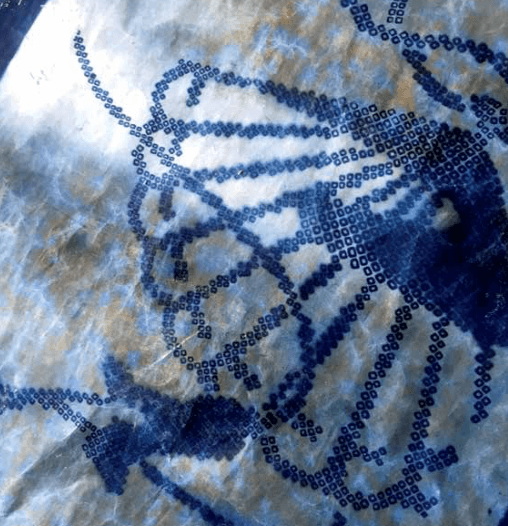Jill Flower has always had a passion for creative visual arts and crafts, and after completing a foundation course she began a BA in Fine Art: Printmaking. Now in her third and nal year at Brighton University, Jill is gearing up for her nal project. In preparation, she has been experimenting with a variety of printmaking styles, in particular, the cyanotype process.
The images you see on this spread are actually sections of a 33-foot long print that Jill created on the beach. ‘I thought it would be fun to produce a large piece of work using the sunlight, found objects and processing it in the sea.’
To create a cyanotype, paper (or any other medium that can absorb solution) is coated with light-sensitive chemicals and dried. To create the image, negatives or objects are placed on it before being exposed to UV light, either using the sun or a specialist UV light source. The item(s) that block the light will be revealed in white and everything else in blue.
Jill enlisted the help of fellow students and technicians to carry out her experiment. She bought a roll of wallpaper, and coated the paper with the light-sensitive chemical one section at a time, while a friendused a hairdryer to get the drying process started. It was then hung in a large-screen drying cabinet for 30 minutes to allow it to dry fully.
On the day of the experiment the wallpaper was transferred to the beach in a black bin liner to prevent it exposing in transit. Without a plan in place, Jill and her helpers set about placing objects randomly onto the rolled out wallpaper. ‘A couple of the students said they would like to lie on it, while others wanted to put personal objects on it or collect items from the beach. One person brought along some Japanese Kimono stencils that were placed in the middle. Once we unrolled the coated paper, everyone did what they wanted.’
To work out how long to expose the coated wallpaper for, Jill had visited the beach the previous day with a small piece of paper to test the process. With an estimate of 15 minutes, Jill knew the process was going to require some guesswork. She said, ‘I had a rough idea, but on the day we could see the paper changing, which helped. People were adding bits to the composition at di erent stages during the exposure too, so it was very much a “touchy feely” experiment.’ But the experiment wasn’t quite over;
the next task, after removing the objects, was transferring the 33-foot roll of paper into the sea, which proved rather challenging. Jill and several others carefully made their way (fully clothed) into the sea to rinse the print. ‘It was only in for a couple of minutes; we could see when it was washed. I would have kept it in for longer but even the calmest of waves made it di cult to manage and it was in danger of breaking up.’
Typically, a cyanotype needs to be rinsed in water. Jill usually adds hydrogen peroxide to encourage the blue to come up much faster. But with the seawater just a few steps away,
it made perfect sense for Jill to develop her wallpaper there and then. ‘Substituting with the sea worked really well and it reacted exactly like water with hydrogen peroxide, as the colour came up really quickly. Usually the blue will strengthen as it oxidises over the rst 24 hours but the sea seemed to do this in one go!’
The print was then dried in the sun on the beach before they returned with it to the university campus. It had been a successful experiment. ‘The nal piece was very pleasing and had an underwater feel to it. The seawater created a very rich blue tone, probably due to the e ect of the salts.’
Having had such a successful outcome, Jill plans to try even more experiments like this one, ‘I love the idea of using the environment to make art, and I love to work collaboratively with people.’ Jill continues, ‘I will repeat the process but next time I need to plan where and how it will be displayed, so I can give more direction over the artwork itself.’
With a future eld trip planned to Morocco, Jill’s aim is to take some cyanotype paper with her and return with lots of work and ideas for inspiration that she can develop during her nal year. We can’t wait to see what she does next!



